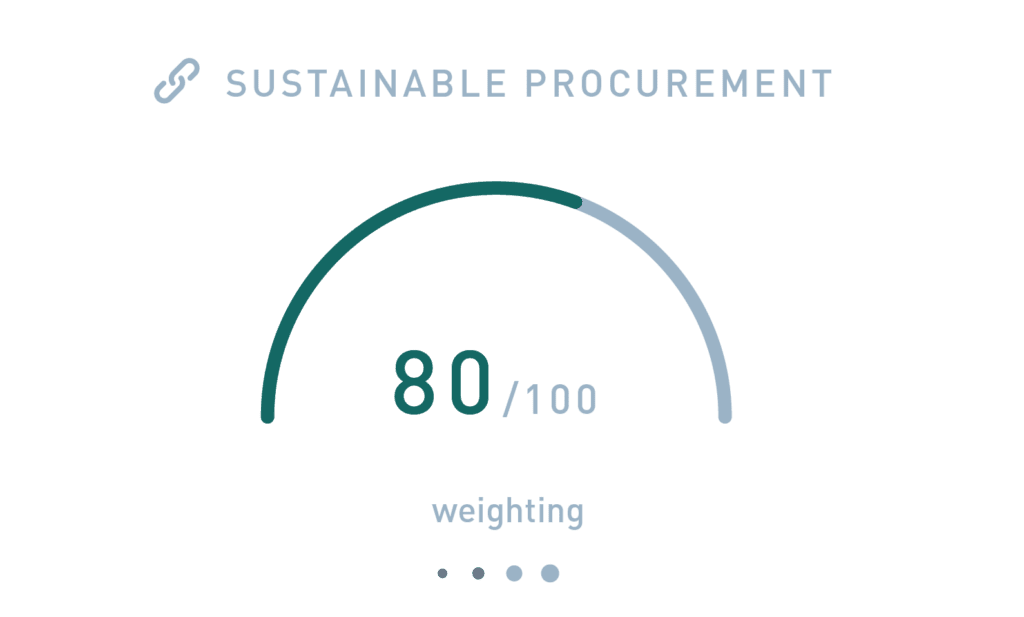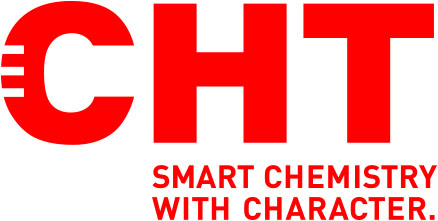ECOLOGY
Supplier management
Demanding and promoting sustainability
The CHT Group procures numerous raw materials, preliminary products, technical goods and services. Our aim is to secure competitive advantages for our group through a professional purchasing organization. Our suppliers are also an important part of our value chain. Together with them, we aim to further expand our commitment to sustainability and minimize risks. We choose reliable suppliers who provide us with high-quality raw materials at competitive prices. Our aim is to make our suppliers’ contribution to sustainability transparent and to create a uniform, global program for responsible procurement and for improving environmental and social standards at suppliers.
Our purchasing organization not only requires a reliable supply, but also takes ecological, social and ethical aspects into account in addition to economic and qualitative criteria when working with our suppliers.
In 2023, we developed a supplier risk assessment process and carried it out for the German companies. This risk analysis was based on the Chemie3 industry standard, the sustainability initiative of the VCI, BAVC and the chemical union IGBCE. The standard supports chemical companies in fulfilling their social responsibility under the Supply Chain Due Diligence Act and in implementing human rights due diligence. The CHT Group is not required to report, but will roll out the risk analysis and the associated supplier management to all subsidiaries worldwide as of 2024 in order to ensure global transparency in purchasing.
In 2022, we summarized our human rights positions in a human rights declaration and published it on our website.
The following procedure was defined as part of the further development of supplier management: Suppliers with a risk rated as low are not subject to any further measures unless there is knowledge of actual incidents. Suppliers with a risk rated as medium to high receive a questionnaire and the Code of Conduct for self-assessment and signature. Depending on the result of the supplier self-assessment, further steps are taken to qualify the supplier: For example, an audit is carried out at the supplier’s premises or the supplier presents an EcoVadis certification with at least a bronze result.
As part of our climate protection activities to increase transparency and support our reduction potential, we began introducing “Sustainability Roundtable Meetings” with key suppliers in 2023. The meetings, which take place once a year, provide information on how far our suppliers have come in their sustainability efforts and how and with which services or primary data they can support CHT’s sustainability goals. In 2023, around 20 sustainability roundtable meetings were held with suppliers of strategic raw materials, logistics partners and suppliers of packaging materials.
The previous CHT supplier evaluation process is simplified by a globally standardized questionnaire that is sent to each supplier at least once to determine their baseline sustainability performance.
In 2023, a total of 436 suppliers of the German companies were subjected to a risk analysis. They cover a purchasing volume of around 130 million EUR for raw materials, operating supplies and services.
According to the evaluation criteria, 315 (72 %) of these suppliers were assessed as low risk, 96 suppliers are considered to be medium risk and 25 suppliers are considered to be high risk. The suppliers with a medium and high risk received both the Supplier Code of Conduct for signature and the Supplier Questionnaire for self-disclosure.
In addition to the above-mentioned performance criteria for quality management and requirements in the EHS (Environment, Health, Safety) area, the location of the supplier is also considered in the case of our suppliers in the services and MRO (Maintenance, Repair, Operations) area. Local suppliers are preferred for reasons of shorter transport distances (reduction of emissions).
Certification of procurement by EcoVadis
We are audited by EcoVadis once a year to review and evaluate our sustainability activities. One of the four areas assessed is procurement. Due to the additional measures for supplier management described above, the scoring for sustainable procurement in the CHT Group improved to 80/100 scores in 2023. The result of the EcoVadis certification is valid for 2024.

The EcoVadis Sustainability Audit 2023 determined a score of 80 for the CHT Group’s sustainable procurement management.
